This Lemon Rosemary Spelt KAMUT Campagne Boule, made with whole grain spelt and Kamut, is filled with a slurry of rosemary, lemon zest, and olive oil. The crumb has a slightly tangy flavor due to the lemon zest and the crust has a toasty undertone due to the inclusion of whole grain spelt and KAMUT flours.
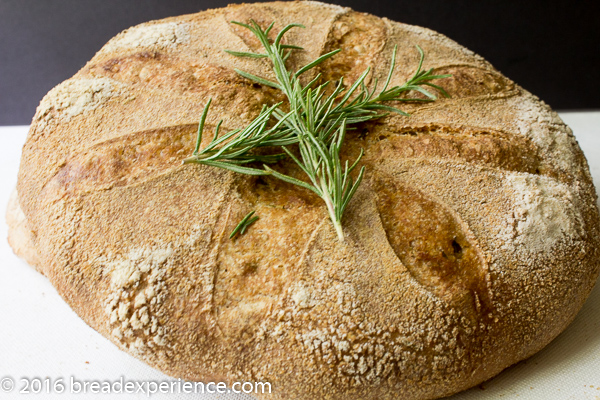
This whole grain loaf was the monthly bake for the Grain Mill Group last month. The challenge was to make a wholegrain version of Della Fattoria’s Meyer Lemon Rosemary Campagne Boule.
The first time I made it, I used emmer and KAMUT. The loaf turned out a little dense, and I thought the emmer was a bit overpowering for the flavors in the slurry. So I decided to try it again.
The next time I made the bread with spelt and emmer. The second version probably would’ve worked out okay except I got distracted when I baked it. I was trying to rush the baking process and hold a conversation with my son at the same time. This of course, didn’t work out so well. When I placed the loaves onto the baking stone, they flopped over the sides. I ended up throwing the whole mess away. This just goes to show that I should’ve paid attention to my son. and bake the loaves one at a time. Lesson learned.
I waited a few days then tried it again. This time, I used a mixture of KAMUT and spelt flour. This version turned out to be the winning combination. I made two loaves and scored each one a little differently.
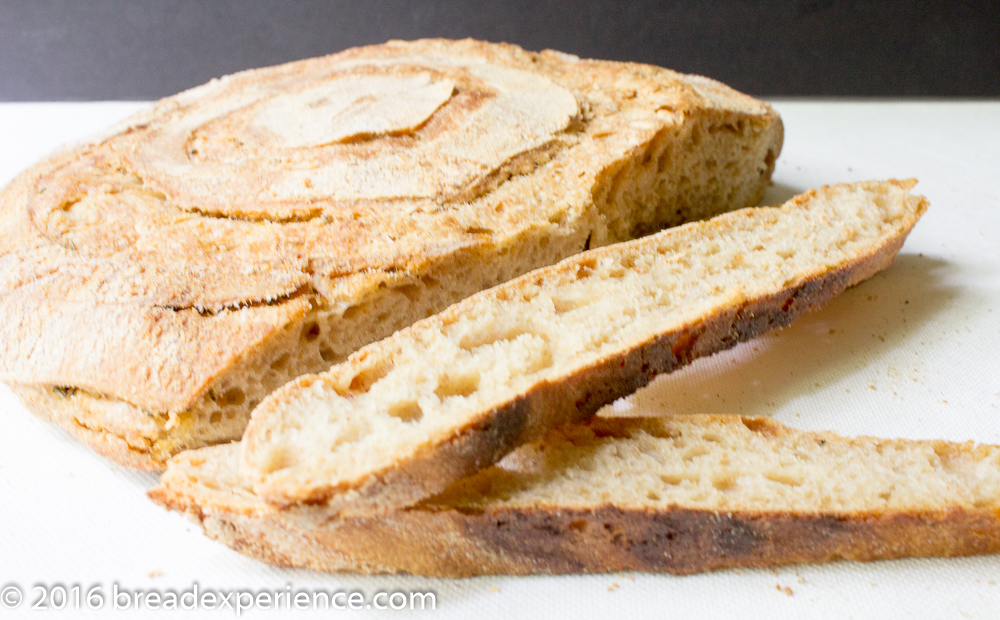
Lemon Rosemary Spelt KAMUT Campagne Boule
This recipe has been adapted from the Della Fattoria Bread Cookbook by Kathleen Weber.
As posted in the Grain Revival – Whole Grain Bakers’ FB group with my changes in italics.
Pain De Campagne Dough
- 130 grams 100% hydration starter, active and recently fed
- 250 grams whole grain KAMUT Khorasan flour
- 250 grams whole grain Spelt flour
- 204 grams all-purpose Spelt flour
- 600 grams water, plus more if needed
- 14 grams salt (I used less salt)
Additions to the dough after the pre-shape:
- 1.5 tablespoons grated lemon zest (preferably from Meyer lemons, but other lemons will do just fine)
- 1.5 tablespoons chopped fresh rosemary
- 3 tablespoons olive oil
- 1-1.5 teaspoons of coarse sea salt
INSTRUCTIONS:
Autolyse your flour with the water for 1 hour before you are ready to do the final mix of dough.
At the end of that hour, add the starter and salt and 20 grams of water (if necessary) to allow the starter and salt to more easily incorporate it into the flour mixture. Use a pinching/squeezing motion to thoroughly mix everything. Once mixed, allow to sit for 30 minutes before doing your first stretch and fold.
For the first fold, wet your hands and then pull the dough up from the bottom of the container and fold the dough over on itself from left to right and then top to bottom. Cover and let rest for 30 minutes.
For the second fold, repeat as for the first. Then cover and let rest for another 30 minutes.
For the third and final fold, repeat as before. Cover and let ferment in a warm draft-free spot until there is bubbling on the surface of the dough, 1.5-3 hours depending on the conditions of your kitchen.
Continue to the shaping and final proof phase or retard the dough in the refrigerator overnight
This is where I deviated from the method Jocelyn posted in FB group. After the 1.5-3 hour bulk ferment, it was around 11:30 pm so I covered the bowl with plastic and placed it in the refrigerator to retard until about 7 pm the next evening.
The next evening, I removed the dough from the refrigerator and continued the process.
After the bulk ferment on the counter or cold ferment in the fridge
Turn the dough out onto your work surface and gently preshape into a ball. While it rests for 10 minutes, prepare the add-ins.
Combine the zest and rosemary in a small bowl, then add enough olive oil to create a slurry similar in consistency to pesto.
At the end of the 10-minute bench rest, press the dough into a 9-10-inch round. Dimple the dough with your fingers and create a small shallow well in the center. Pour the zest slurry into the well. Next, fold the sides in to create a boule, enclosing the mixture inside the dough ball. Then, tighten the boule against the work surface until you just begin to see the rosemary mixture under the surface of the dough.
Generously dust your proofing basket or container with flour. Gently place the dough into the basket, seam side up. Allow the dough to proof until puffy, about 1.5-3 hours depending on the conditions of your kitchen.
Continue onto the baking phase or retard the dough in the refrigerator overnight (again)
I started this process after 7 pm so that didn’t leave much time for baking the bread. After allowing the loaves to proof in the basket for 1.5 hours, I covered the proofing baskets with plastic wrap and placed the loaves in the refrigerator to retard overnight. It was about 8:45 pm and I let them rest in the refrigerator until about 1 pm the next day.
After the final proof on the counter or cold ferment in the fridge
The next day, I baked the loaves straight from the refrigerator.
As the dough is proofing (either on the counter or in the fridge), preheat your oven and baking stone or pot to 475 degrees. Your oven preheat should be timed so that the oven is at the proper temperature by the end of the final proof. When the dough is pressed with your fingertip, the indentation should remain or fill in slowly.
Turn the dough out onto a piece of parchment, and sprinkle the top with the coarse sea salt.
Quickly slash and use the parchment to help load the bread onto your baking stone or into your pot (covered with the hot lid), taking care not to burn yourself. Make sure to create adequate steam in the oven if using a baking stone or steel immediately after loading the bread onto the baking surface.
Bake for 10 minutes at 475 degrees before lowering the temperature to 450 degrees, then continue baking for another 15 minutes before removing the lid from your pot. If baking on a surface, carefully crack the oven door open for a few seconds to allow any remaining moisture to escape.
Continue baking until the top is golden brown, for a total bake time of around 55 minutes, internal temperature should reach around 210 degrees. Remove bread to a rack and allow to cool completely before cutting.
This bread makes a fabulous dipping bread due to the lemon zest and rosemary and goes well with pasta dishes.
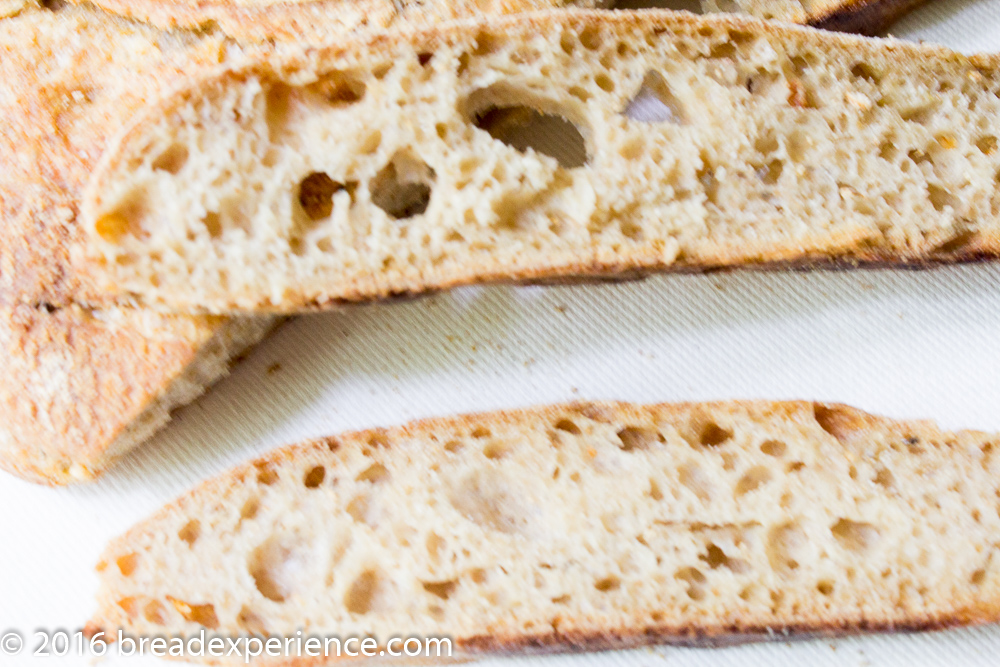
Happy Baking!
Cathy
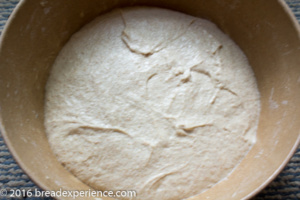
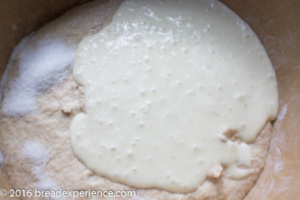
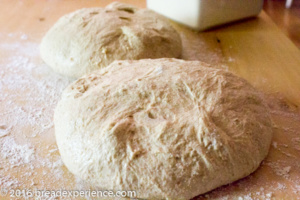
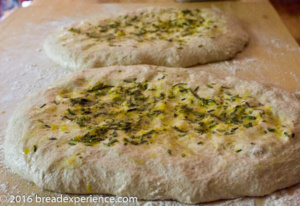
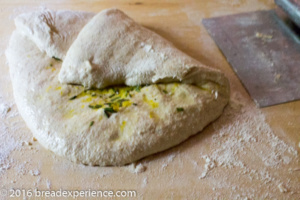
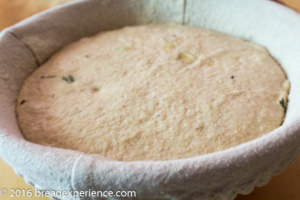
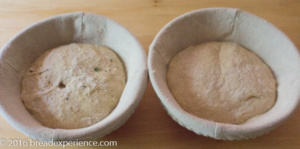
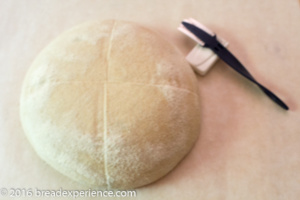
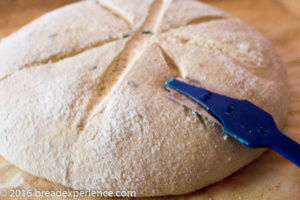
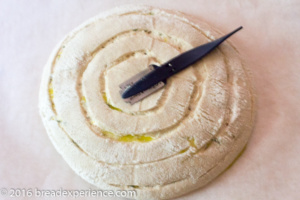
Leave a Reply